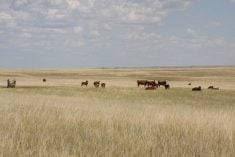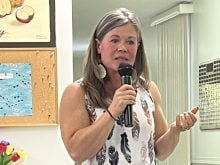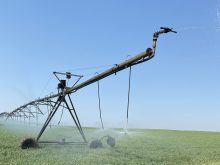As reservoir levels stabilize in southern Alberta, a consulting company says it’s crucial that all stakeholders work together
Irrigation districts in southern Alberta managed a tough growing season as drought maintains a stubborn hold and calls for maintaining co-operation between stakeholders and better water storage infrastructure continues.
From the Milk River along the U.S. border to the Hay River running into the Northwest Territories, 50 water shortage advisories are currently in place across the province.
The situation has stabilized, in some cases improved, in reservoirs that feed southern Alberta cropland and provide water for livestock operations and food processors.
One exception has been the Oldman Dam reservoir, which has seen levels fall to their lowest since 2001. The City of Lethbridge is reassuring its customers that water supplies will continue uninterrupted.
Read Also

U.S. bill could keep out Canadian truckers
The Protecting America’s Roads Act, which was tabled in the U.S. House of Representatives at the beginning of October, would “rid the country of illegal immigrant commercial truck drivers and ineligible foreign nationals.”
The city, which provides water to Lethbridge County, Coaldale as well as other communities and agri-food processing industries in the region, said it plans to dredge its water treatment plant’s intake canal as a precaution.
Kim Sturgess, WaterSmart Solutions chief executive officer, said the South Saskatchewan River Operations Model, or SSROM, has been key in successfully managing water in southern Alberta.
“What we’ve been able to do across the three basins in the south — the Oldman, Bow and Red Deer — is establish working groups of engaged stakeholders in the basins working with this SSROM tool to develop a roadmap for what sustainable water management can look like,” she said.
Sturgess’s Alberta-based company, which provides consulting services for water management, came into being during discussions about and ultimately the decision to implement a moratorium on new water licences along the South Saskatchewan basin.
Water conservation, especially within irrigation districts, has produced profound successes in improving efficiencies, she said.
WaterSmart authored a report on a drought simulation exercise conducted in June 2022 that involved using the provincial drought management plan adopted in 2019, which changed the response system from four stages to five.
The exercise included stakeholders from irrigation districts, municipalities, First Nations organizations, and advisory councils. The report concluded that co-operation is needed in the lead-up to and during a drought.
Regarding the Oldman basin, the report found that while the watershed could handle the first year of a drought, the second year would require establishment of water sharing agreements over the winter prior to the growing season.
Water sharing agreements will be crucial in managing an extended drought, said Sturgess, adding that it’s her understanding that managing the possibility of another year of drought is a high priority for the Alberta government.
Alberta uses a first-in-time, first-in-right water management system that prioritizes the earliest licence holders over newer ones, and stakeholders have managed to avoid priority calls on water supply through water sharing agreements.
“Our work suggests these frameworks are really good and very helpful,” said Sturgess. “There is a big motivation in southern Alberta to work together collaboratively because it’s in their best interests to do so. You cannot have a successful society in a failed watershed, a wise person said once. So, ensuring a watershed is healthy is a benefit for everyone.”
Drought might be an Alberta issue right now, but the issue of water supply to farms and ranches is national, according to a recently released report, A National Agri-food Water Action Plan, from the Canadian Agri-Food Policy Institute (CAPI).
“We tend to take water for granted in Canada,” said Tyler McCann, CAPI managing director.
McCann noted the differences between Alberta’s irrigation infrastructure development over the past century and Saskatchewan’s potential for similar developments in expanding acres under a pivot.
But there is a strain on water supply, he added.
“They are two sides of the same coin. We do need to do a better job on how we leverage water through things like irrigation. We’re seeing the government of Saskatchewan clearly recognizing that, making investments. We’ve seen the government of Alberta put irrigation into the name of the agricultural department so that awareness is there,” said McCann. “On the other side of that same coin is that we need to be smarter about conserving water.”
He held up the investments into infrastructure being made by Alberta irrigators as an example of how efficiencies can be made, which has allowed for increases in not only productivity of high-value crops but conservation as well.
But demand pressures continue and are more frequent, said McCann.
Issues regarding water within the agricultural sector boil down to either there is too much or too little, he said, and a national effort in co-ordinating a water management is needed.
He added he’s not sure if Canada is adequately prepared for a drought situation like those faced by Australia or the U.S. Southwest.
Alberta continues to be in Stage 4 of its drought management plan since it was elevated to that level in July.


















